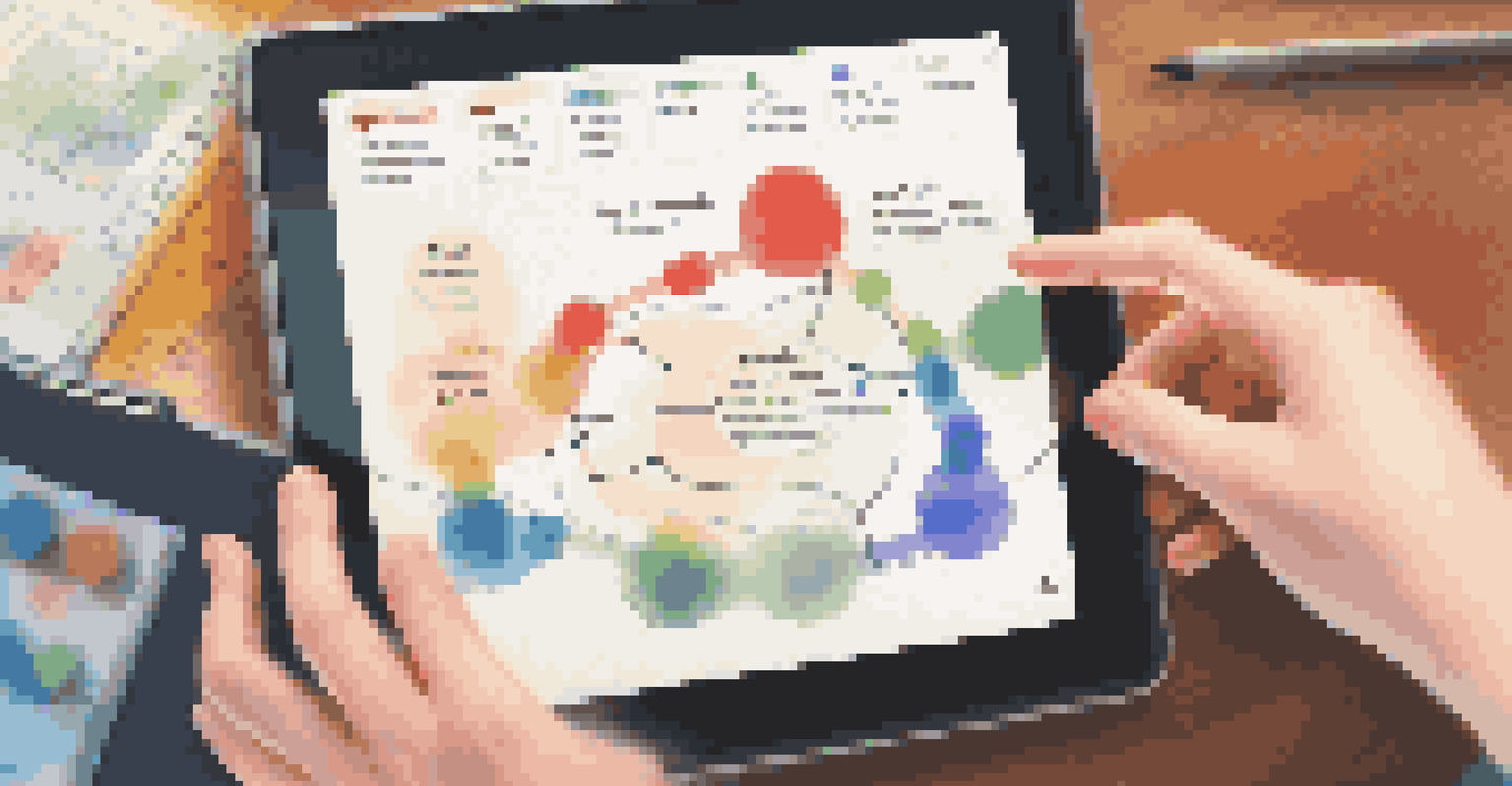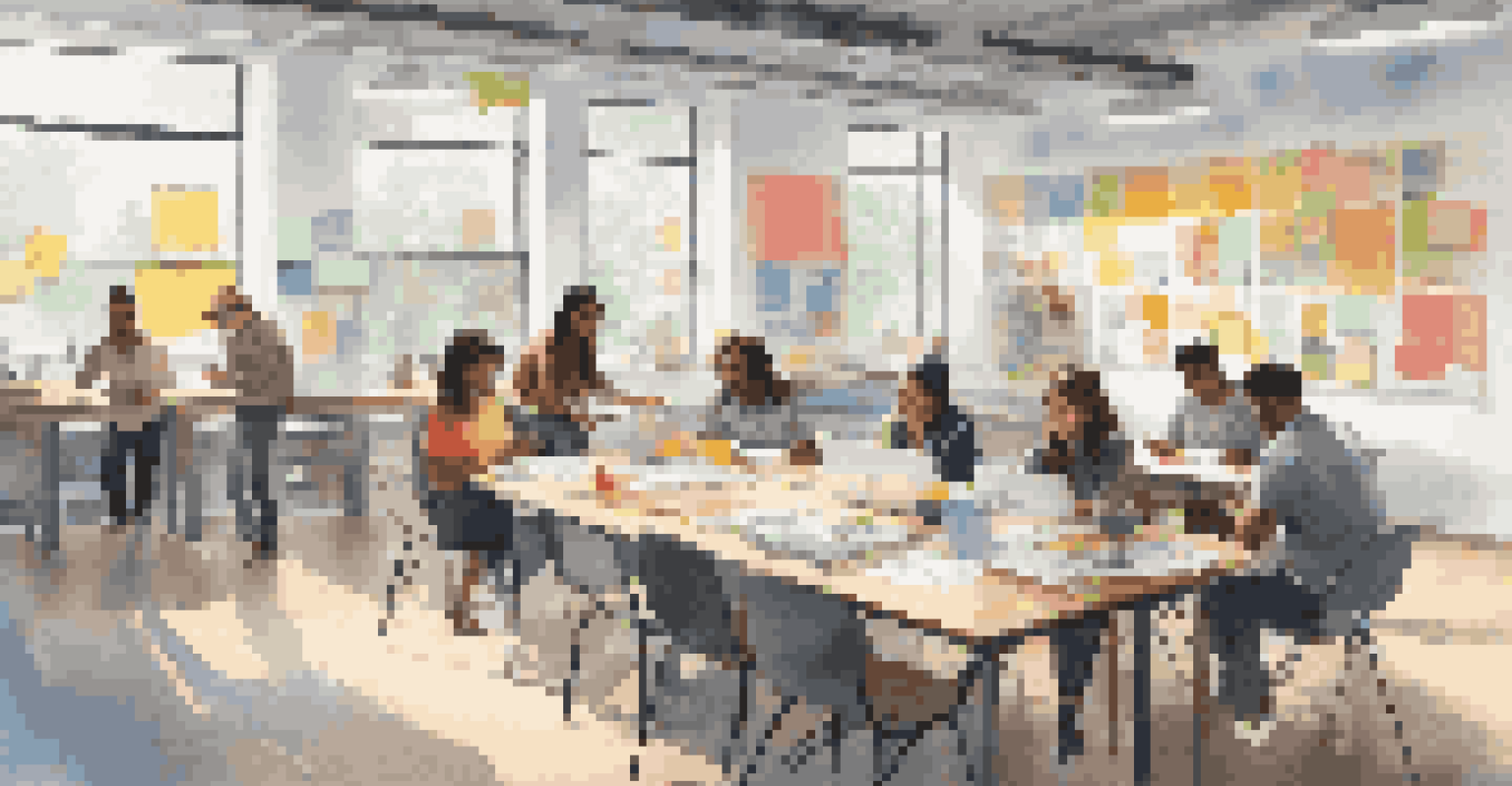Utilizing Learning Pathways to Personalize Blended Learning

Understanding Blended Learning and Its Importance
Blended learning combines traditional classroom methods with online instruction, creating a flexible learning environment. This approach caters to diverse learning styles, allowing students to engage with content in various ways. By blending face-to-face and digital experiences, educators can foster greater student engagement and accountability.
Blended learning is not a new concept; it is an approach to education that combines the best of both worlds: traditional and online learning.
The importance of blended learning lies in its adaptability; it can meet the needs of individual learners while providing a structured framework. This flexibility enables students to learn at their own pace, making the educational experience more personalized. With the right tools and strategies, blended learning can enhance knowledge retention and application.
As education continues to evolve, understanding the principles of blended learning is crucial for both educators and learners. By embracing this model, institutions can create a dynamic learning atmosphere that encourages exploration and growth. Ultimately, blended learning paves the way for a more inclusive and effective educational landscape.
What Are Learning Pathways and Their Benefits?
Learning pathways are structured sequences of educational experiences designed to guide learners through their educational journey. They provide a clear roadmap, aligning learning objectives with specific outcomes, which helps learners navigate their studies effectively. By connecting various learning resources, pathways create a cohesive learning experience.

One of the primary benefits of learning pathways is their ability to personalize education. They allow educators to tailor content based on individual learners’ needs, interests, and skill levels. This personalized approach not only boosts engagement but also empowers students to take ownership of their learning.
Blended Learning Enhances Engagement
Combining traditional and online methods fosters greater student engagement and personalizes the learning experience.
Moreover, learning pathways foster collaboration among learners, enabling them to share insights and experiences. By encouraging peer interactions, these pathways create a supportive learning community. In turn, this collaborative environment enhances motivation and encourages deeper understanding of the material.
Integrating Learning Pathways into Blended Learning
Integrating learning pathways into a blended learning model requires thoughtful planning and strategy. Educators must first identify the core competencies and learning objectives they wish to achieve. Once these are established, they can design pathways that align with both online and in-person components, ensuring a seamless learning experience.
Personalized learning is not a technology; it is a way of thinking about learning and teaching.
Using technology to create and manage learning pathways is essential. Platforms such as Learning Management Systems (LMS) can facilitate the organization of content and track learners’ progress. This not only streamlines the educational process but also provides valuable data that can inform future instructional decisions.
Additionally, flexibility is key when integrating pathways into blended learning. Educators should be prepared to adjust pathways based on learner feedback and performance. This responsiveness fosters a dynamic learning environment where students feel supported in their educational pursuits.
Creating Effective Learning Pathways for Learners
Creating effective learning pathways starts with understanding your learners. Conducting assessments to identify their strengths, weaknesses, and interests is crucial. This data can inform the design of pathways that cater to individual needs, ensuring that every learner feels valued and engaged.
Next, educators should focus on incorporating a variety of learning modalities within the pathways. This means blending visual, auditory, and kinesthetic learning experiences to cater to different preferences. By offering diverse content types, such as videos, articles, and interactive activities, educators can enhance the overall learning experience.
Learning Pathways Personalize Education
Structured sequences of learning experiences allow for tailored education that meets individual needs and interests.
Lastly, providing clear guidelines and support throughout the learning journey is essential. Encouraging ongoing communication and feedback helps learners feel connected and motivated. With the right support in place, students can navigate their pathways with confidence and purpose.
Assessing Progress Along Learning Pathways
Assessment plays a vital role in the effectiveness of learning pathways. Regularly evaluating learner progress allows educators to identify areas of strength and those needing improvement. By implementing formative assessments, such as quizzes and peer evaluations, educators can gather valuable insights into each learner's understanding.
In addition to traditional assessments, incorporating self-assessments can empower students to reflect on their learning. This encourages them to take an active role in their educational journey and fosters a growth mindset. When learners can see their progress visually, it boosts their motivation and commitment to the pathway.
Moreover, using data analytics tools can enhance the assessment process. These tools can track learner engagement and performance over time, offering deeper insights into the effectiveness of the pathways. By leveraging this data, educators can make informed adjustments to optimize the learning experience.
Fostering Motivation and Engagement in Learning Pathways
Motivation and engagement are key components of successful learning pathways. To foster these qualities, educators should create meaningful learning experiences that connect to real-world applications. When students see the relevance of their studies, they are more likely to be motivated to engage with the material.
Incorporating gamification elements can also enhance motivation within learning pathways. By integrating points, badges, or leaderboards, educators can create a fun and competitive learning atmosphere. This approach encourages learners to actively participate and strive for achievement, making the journey enjoyable.
Assessment Drives Learning Improvement
Regular assessment and data analytics empower educators to track progress and optimize learning pathways effectively.
Lastly, celebrating milestones and achievements is crucial for maintaining engagement. Recognizing progress, no matter how small, helps learners feel accomplished and valued. By creating a culture of celebration, educators can inspire students to continue pushing forward on their learning pathways.
The Future of Personalized Learning with Pathways
The future of personalized learning is bright, with learning pathways at the forefront of this evolution. As technology continues to advance, the potential for customization in education will increase exponentially. Educators will be able to leverage data analytics, artificial intelligence, and adaptive learning technologies to create even more tailored learning experiences.
In this future landscape, the focus will shift towards learner agency, empowering students to take charge of their education. With personalized pathways, learners will have the freedom to explore their interests and passions while still meeting educational standards. This shift will promote lifelong learning skills essential for success in a rapidly changing world.

Ultimately, embracing learning pathways in blended learning environments will pave the way for a more inclusive and effective educational system. By prioritizing personalization and adaptability, educators can create experiences that resonate with every learner. As we look ahead, the integration of learning pathways will redefine what it means to learn in today’s digital age.